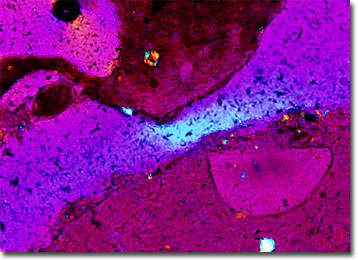Polarized Light Microscopy Digital Image Gallery
Phosphorite
Phosphorite is a type of sedimentary rock that is primarily composed of apatite and other phosphates. These phosphates may derive from an array of sources, including coprolites, fossilized bones, and the shells of marine organisms.

View a second image of Phosphorite
Often alternatively referred to as phosphate rock, phosphorite is frequently associated with chert, shale, and sandstone. The phosphate that is contained in the rock is typically present in dense masses or nodules, which are the chief global resource exploited for phosphorous-containing fertilizers. Deposits of phosphorite can be found in various locations around the world, but the nation leading in both production and consumption of the rock is the United States. In recent years, the North American country as well as several other important phosphorite mining nations began reducing export of the raw material, however, to safeguard reserves for their own manufacture of phosphorous products, a large portion of which enter the international market, where they command higher prices than unprocessed goods.
In addition to fertilizers, the phosphate minerals derived from phosphorite are utilized in flame-retardants, insecticides, fireworks, and a plethora of other products. Phosphates have also been heavily utilized in detergents, but have become less popular for this purpose over the last few decades. The reason for the decrease in demand of phosphate-based detergents is primarily due to mounting evidence that phosphates interfere with the natural balance of water bodies, causing eutrophication and algal blooms. Yet, it is not universally agreed that the primary means of phosphate entry into waterways is through effluent containing detergents. Many scientists believe that fertilizer run-off may be equally culpable of polluting waters.
